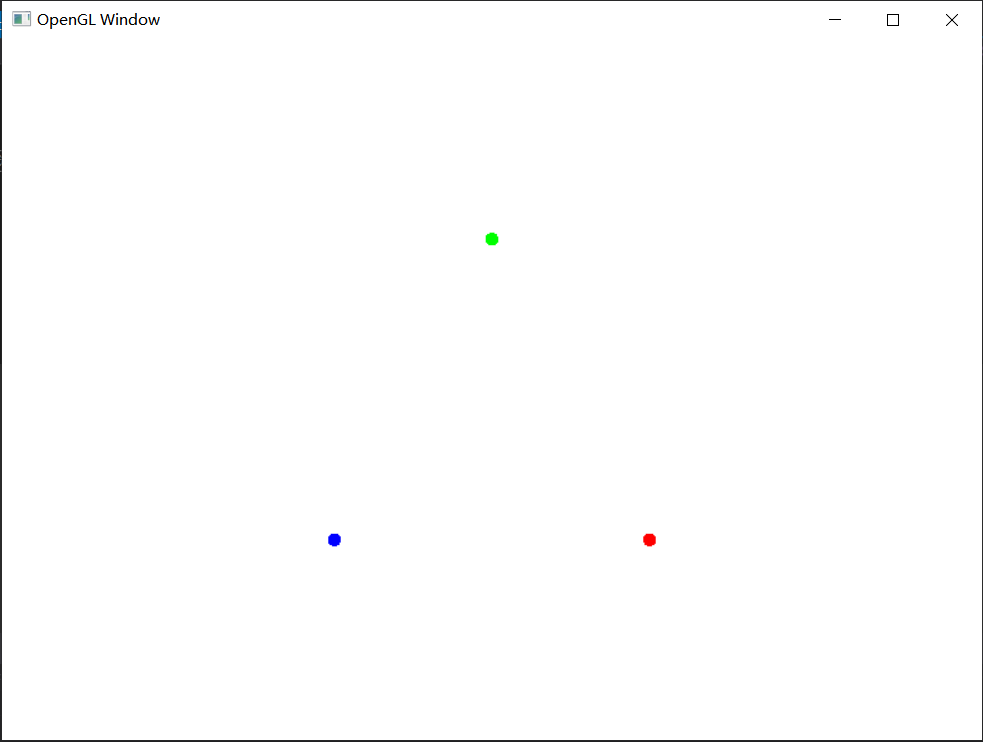1. Draw point GL_POINTS
The point size that OpenGL draws by default is 1px, you can use glPointSize() to change the size of the point, but pay attention: glPointSize() cannot be placed between glBegin() and glEnd(), it must be placed before glBegin().
1. Code
void Draw()
{
glClearColor(1, 1, 1, 1.0f); //白色背景
glClear(GL_COLOR_BUFFER_BIT);
//绘制点
glPointSize(10.0f);
glBegin(GL_POINTS);
glColor4ub(255, 0, 0, 255);
glVertex3d(-0.2f, 0, -1.5f);
glColor4ub(0, 255, 0, 255);
glVertex3d(-0.1f, 0, -1.5f);
glColor4ub(0, 0, 255, 255);
glVertex3d(-0.0f, 0, -1.5f);
glEnd();
}2. Drawing effect
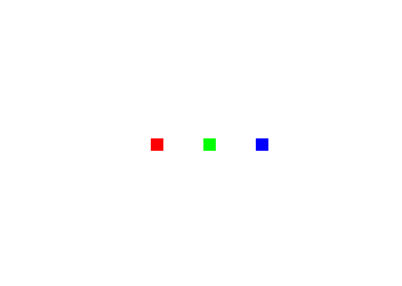
2. Draw the line
1.GL_LINES
A set of straight lines can be obtained by connecting each pair of adjacent points ( two are a pair, which cannot be reused ). If the last endpoint is in an odd position, the point is ignored.
(1) Code
void Draw()
{
glClearColor(1, 1, 1, 1.0f); //白色背景
glClear(GL_COLOR_BUFFER_BIT);
//绘制线
glLineWidth(10.0f);
glBegin(GL_LINES);
glColor4ub(255, 0, 0, 255);//红
glVertex3f(-0.4f, 0.0f, -1.5f);
glColor4ub(0, 255, 0, 255);//绿
glVertex3f(0.0f, 0.0f, -1.5f);
glColor4ub(0, 0, 255, 255);//蓝
glVertex3f(0.0f, 0.2f, -1.5f);
glColor4ub(0, 255, 255, 255);//青
glVertex3f(0.0f, 0.4f, -1.5f);
glEnd();
}(2) Effect
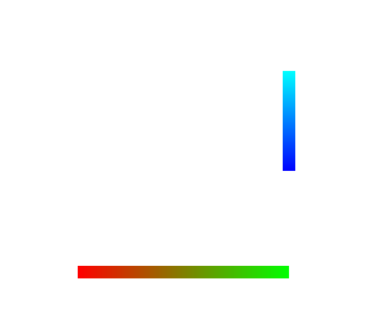
2.GL_LINE_STRIP
The incoming points will be connected sequentially until the last endpoint.
(1) Code
void Draw()
{
glClearColor(1, 1, 1, 1.0f); //白色背景
glClear(GL_COLOR_BUFFER_BIT);
//绘制线
glLineWidth(10.0f);
glBegin(GL_LINE_STRIP);
glColor4ub(255, 0, 0, 255);//红
glVertex3f(-0.4f, 0.0f, -1.5f);
glColor4ub(0, 255, 0, 255);//绿
glVertex3f(0.0f, 0.0f, -1.5f);
glColor4ub(0, 0, 255, 255);//蓝
glVertex3f(0.0f, 0.2f, -1.5f);
glColor4ub(0, 255, 255, 255);//青
glEnd();
}(2) Effect
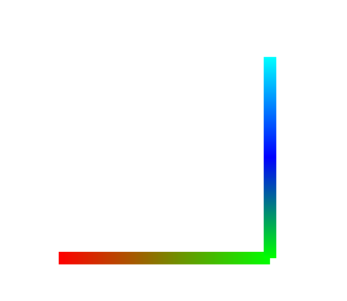
3.GL_LINE_LOOP
On the basis of GL_LINE_STRIP, end-to-end connection is carried out.
(1) Code
void Draw()
{
glClearColor(1, 1, 1, 1.0f); //白色背景
glClear(GL_COLOR_BUFFER_BIT);
//绘制线
glLineWidth(10.0f);
glBegin(GL_LINE_LOOP);
glColor4ub(255, 0, 0, 255);//红
glVertex3f(-0.4f, 0.0f, -1.5f);
glColor4ub(0, 255, 0, 255);//绿
glVertex3f(0.0f, 0.0f, -1.5f);
glColor4ub(0, 0, 255, 255);//蓝
glVertex3f(0.0f, 0.2f, -1.5f);
glColor4ub(0, 255, 255, 255);//青
glVertex3f(0.0f, 0.4f, -1.5f);
glEnd();
}(2) Effect

3. Draw a quadrilateral
1.GL_QUADS
Note the difference from GL_TRIANGLE_STRIP.
(1) Code
void Draw()
{
glClearColor(1, 1, 1, 1.0f); //白色背景
glClear(GL_COLOR_BUFFER_BIT);
glBegin(GL_QUADS);
glColor4ub(0, 0, 255, 255); //蓝
glVertex3f(-0.2f, -0.2f, -1.5f);
glColor4ub(255, 0, 0, 255); //红
glVertex3f(0.2f, -0.2f, -1.5f);
glColor4ub(0, 255, 255, 255); //青
glVertex3f(0.4f, 0.2f, -1.5f);
glColor4ub(0, 255, 0, 255); //绿
glVertex3f(0.0f, 0.2f, -1.5f);
glEnd();
}(2) Effect
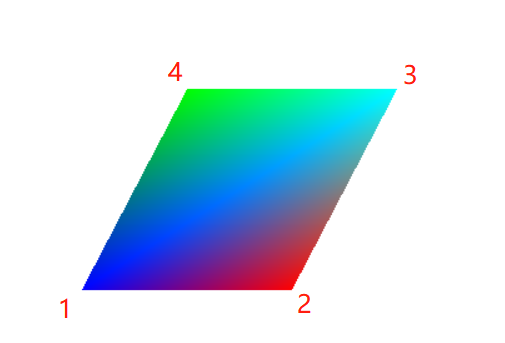
2.GL_QUAD_STRIP
Draws a set of connected quadrilaterals. Each quadrilateral is defined by a pair of vertices followed by a given pair of vertices. A total of N/2-1 quads are drawn. NOTE: The order of vertices used to construct quads from GL_QUAD_STRIP is different from the order used by GL_QUADS.
(1) Code
void Draw()
{
glClearColor(1, 1, 1, 1.0f); //白色背景
glClear(GL_COLOR_BUFFER_BIT);
glBegin(GL_QUAD_STRIP);
glColor4ub(0, 0, 255, 255); //蓝
glVertex3f(-0.2f, -0.2f, -1.5f);
glColor4ub(255, 0, 0, 255); //红
glVertex3f(0.2f, -0.2f, -1.5f);
glColor4ub(0, 255, 0, 255); //绿
glVertex3f(0.0f, 0.0f, -1.5f);
glColor4ub(0, 255, 255, 255); //青
glVertex3f(0.4f, 0.0f, -1.5f);
glColor4ub(255, 0, 255, 255); //粉
glVertex3f(0.13f, 0.2f, -1.5f);
glColor4ub(0, 0, 0, 255); //黑
glVertex3f(0.53f, 0.2f, -1.5f);
glEnd();
}(2) Effect
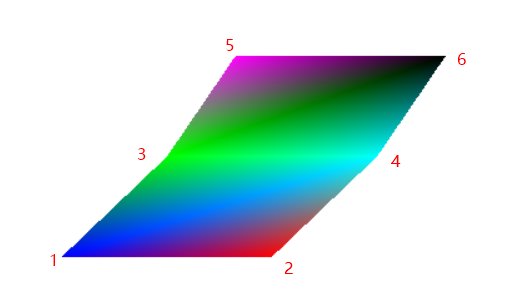
Fourth, draw a convex polygon GL_POLYGON
Draws a single convex polygon. Vertices 1 through N define this polygon.
1. Code
void Draw()
{
glClearColor(1, 1, 1, 1.0f); //白色背景
glClear(GL_COLOR_BUFFER_BIT);
glBegin(GL_POLYGON);
glColor4ub(0, 0, 255, 255); //蓝
glVertex3f(-0.2f, -0.2f, -1.5f);
glColor4ub(255, 0, 0, 255); //红
glVertex3f(0.2f, -0.2f, -1.5f);
glColor4ub(0, 255, 255, 255); //青
glVertex3f(0.4f, 0.0f, -1.5f);
glColor4ub(0, 255, 0, 255); //绿
glVertex3f(0.0f, 0.0f, -1.5f);
glColor4ub(255, 0, 255, 255); //粉
glVertex3f(-0.13f, 0.2f, -1.5f);
glColor4ub(0, 0, 0, 255); //黑
glVertex3f(-0.53f, 0.2f, -1.5f);
glEnd();
}2. Effect
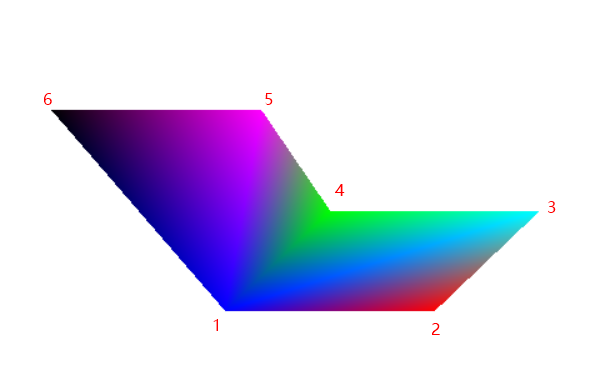
5. Draw wireframe glPolygonMode
1. Draw the wireframe
Add glPolygonMode(GL_FRONT, GL_LINE) before glBegin(); to open the wireframe mode. (glPolygonMode defaults to GL_FILL mode)
(1) Code
void Draw()
{
glPolygonMode(GL_FRONT, GL_LINE);
glBegin(GL_TRIANGLES); //注意是逆时针绘制(CCW),可以通过 glFrontFace(GL_CW); 改成顺时针绘制
glColor4ub(0, 0, 255, 255); //蓝
glVertex3f(-0.2f, -0.2f, -1.0f);
glColor4ub(255, 0, 0, 255); //红
glVertex3f(0.2f, -0.2f, -1.0f);
glColor4ub(0, 255, 0, 255); //绿
glVertex3f(0.0f, 0.2f, -1.0f);
glEnd();
}(2) Effect

2. Draw points
In addition to using the default fill mode and wireframe mode when drawing graphics, you can also use the point mode (the default point is a rectangle, we can change it to a circle).
(1) Code
void Draw()
{
glPolygonMode(GL_FRONT, GL_POINT);
glPointSize(10.0f); //点大小
glEnable(GL_POINT_SMOOTH); //点圆滑效果
glBegin(GL_TRIANGLES); //注意是逆时针绘制(CCW),可以通过 glFrontFace(GL_CW); 改成顺时针绘制
glColor4ub(0, 0, 255, 255); //蓝
glVertex3f(-0.2f, -0.2f, -1.0f);
glColor4ub(255, 0, 0, 255); //红
glVertex3f(0.2f, -0.2f, -1.0f);
glColor4ub(0, 255, 0, 255); //绿
glVertex3f(0.0f, 0.2f, -1.0f);
glEnd();
}(2) Effect
